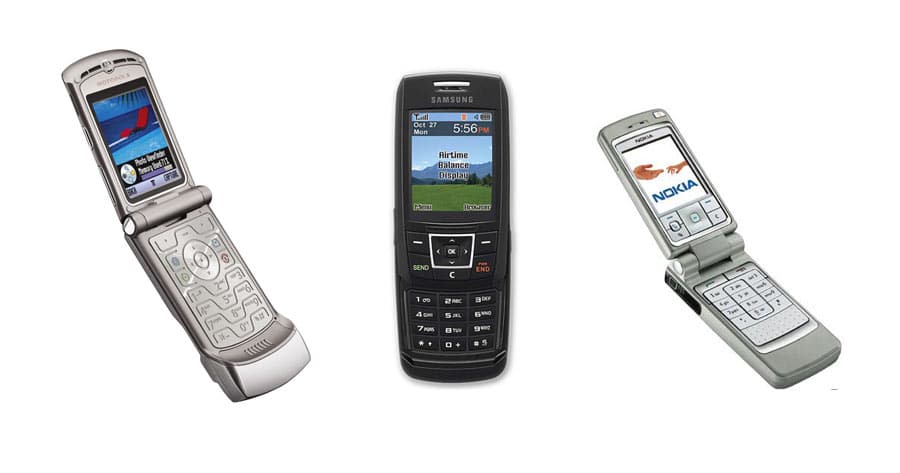The Gilgo Beach serial killer (aka LISK) used burner phones to contact his last four victims.
By the mid-2000s, the sex industry, like many industries, had started moving online.
This provided him with the perfect opportunity to lower his exposure.
Instead of driving around red light districts and approaching sex workers in public, he could now search for his preferred “type” by browsing advertisements on websites such as Craigslist and Backpage.
The killer felt somewhat exposed during his earlier crimes
In the past, the killer would have had to approach sex workers in public and haggle over costs, even if he knew that he wouldn’t have to pay them.
From his perspective, this was a risky act. Although it is likely that he took precautions and only approached women who were standing by themselves, there was always the possibility that an observant bystander would remember him or his vehicle.
At the same time, surveillance cameras were also becoming more commonplace.
The fact that the killer dismembered his earlier victims suggests that he was aware of these risks.
By concealing his victims’ identities, he was able to prevent the police from being able to canvass the areas where they were last seen.
If investigators know a victim’s name, then they can trace their last movements, locate witnesses, and sift through surveillance footage.
For example, they may discover that another sex worker saw the victim talking to a client. The witness might even remember what kind of vehicle the suspect was driving.
However, these investigative steps are not possible with a Jane Doe.
The sex industry moved online during the mid-to-late 2000s
The Gilgo Four (2007-2010) were advertising their services on the Internet.
This means that the killer did not approach them in public. Instead, he found their ads and then contacted them using burner phones.
When the sex industry moved online, sex workers and clients started communicating by phone instead of face-to-face.
This was somewhat problematic for “johns” who had significant others.
Although contacting escorts by phone meant that they no longer had to approach them on the street, it did leave behind digital evidence of their “hobby.”
Archived conversations from old escort forums show that “burner phones” were a regular topic of discussion among these men.
If your cell was on a family plan, there was always a chance that your partner would scrutinize the numbers on the phone bill. There was also the possibility that you’d forget to delete a damaging text message or clear your call log.
If your partner had previously caught you cheating, the risks were even higher, as they were likely monitoring your behavior.
To complicate matters even further, certain escorts would use their call history to advertise to previous clients. For example, if they were back in action after a lull in activity, they would sometimes send a broadcast text to all of the numbers that had previously called them.

This behavior spooked married clients, as they were worried that they’d receive an unsolicited text message at the worst possible moment.
Burner phones became popular among married “johns”
In light of these risks, many men started purchasing cheap, prepaid burner phones that were simple to activate. The phones in question were often older models with press-button inputs and limited Internet capabilities. They were also compact, making them easier to hide.

Radio Shack, Walmart, Target, and other outlets sold these “burner phones” without requiring any proof of identity. As a result, customers were able to provide a fake name and address.
Clients on escort forums were eager to share this information with each other. During my research, I found two or three separate threads where they were giving each other advice on the subject.

Translation: “Get a burner phone and leave it off except when you are contacting escorts. No concerns with significant other. Just make sure she doesn’t find the phone.”
It is important to point out that most sex workers also had burner phones. Therefore, they may have recommended them to clients who had “certain privacy needs.”
The Gilgo Beach killer was a regular client
The killer would have spent a lot of time around sex workers, many of whom he didn’t kill.
He only struck when the conditions were right.
There are likely dozens of escorts out there who provided this man with services without realizing what kind of person he was.
Some of them may have only survived the encounter simply because someone else witnessed the pickup.
Given the standard profile of a serial killer who targets escorts, it is likely that he didn’t just use the burner phones to contact victims. Instead, these phones may have already been part of his broader risk management strategy as a “john.”
The Gilgo Beach killer appears to have used Manhattan as his hunting ground.
When you consider that he likely frequented escorts on a regular basis, a much clearer picture begins to emerge.
This was a Long Island resident who put a substantial distance between his home base and his “hobby” by traveling to Manhattan. He also made ample use of prepaid phones.
If we marry these two facts together, then it stands to reason that he wasn’t just worried about law enforcement.
He was also keen on hiding his activities from someone else.
I originally published this article in September 2022, roughly ten months before Rex Heuermann’s arrest. In September 2025, I corrected grammar issues, condensed wordy paragraphs, and removed certain sex-work-related terms that many find insensitive. The logic, however, was kept the same. An archived version from 2022 is available here.
Following Heuermann’s arrest, it emerged that he was a married family man. Furthermore, he continued using burner phones to solicit escorts long after the Gilgo Beach killings stopped.